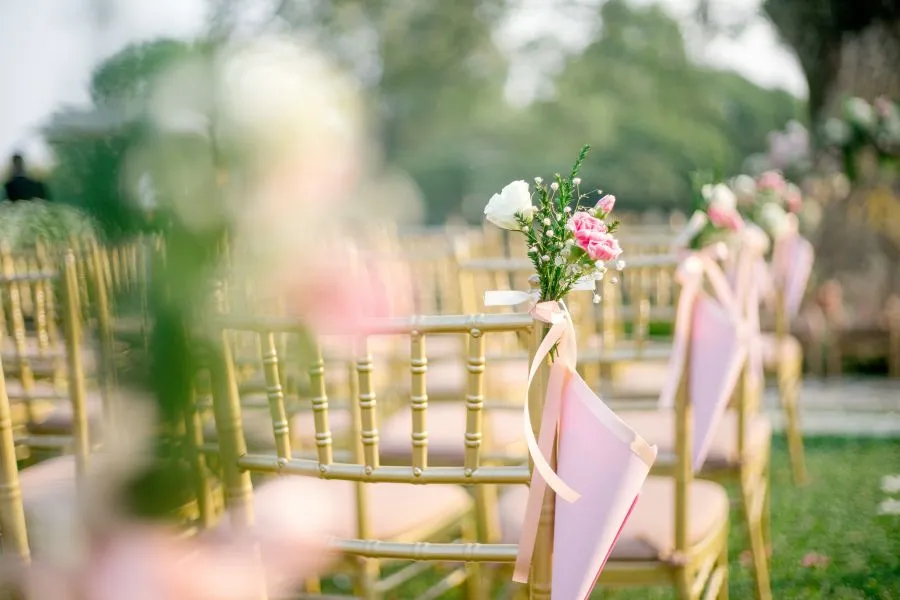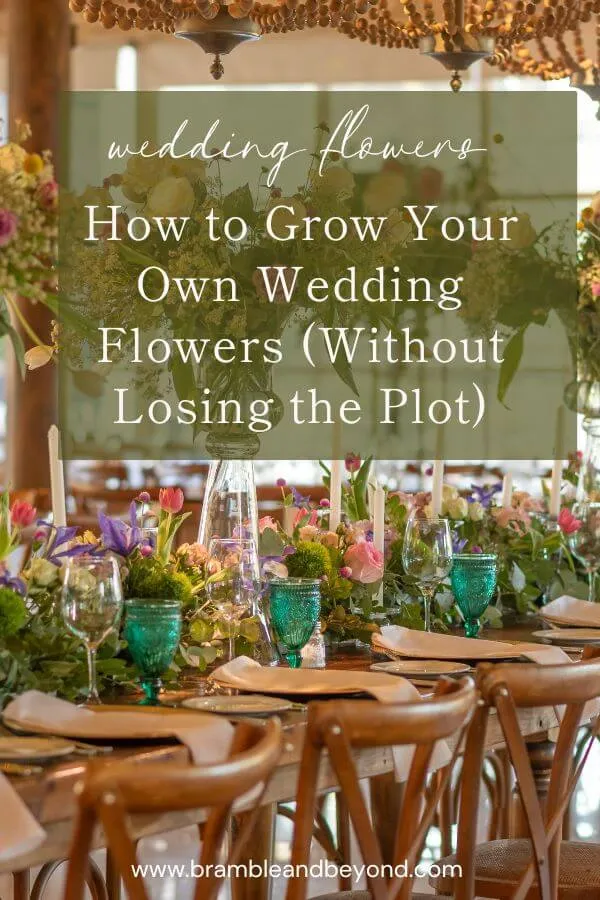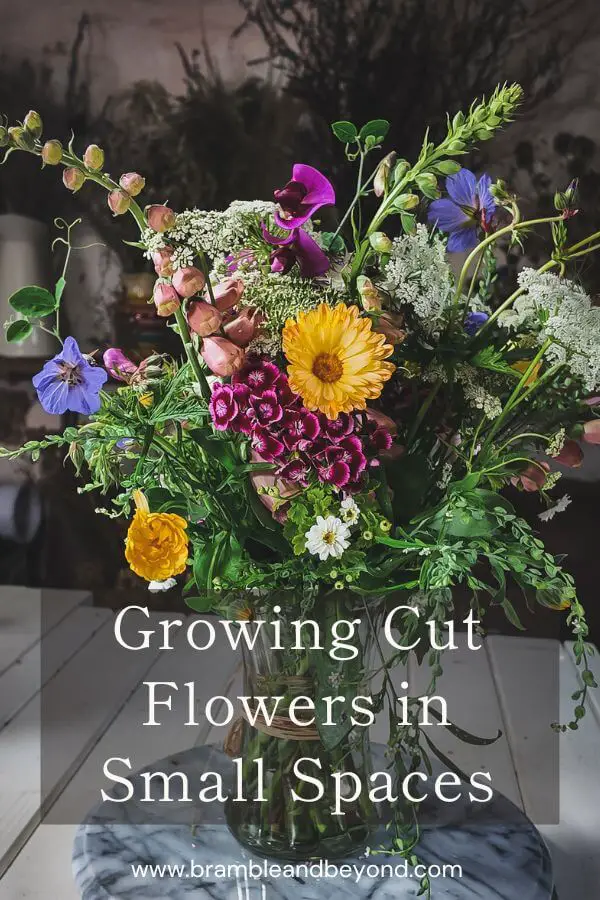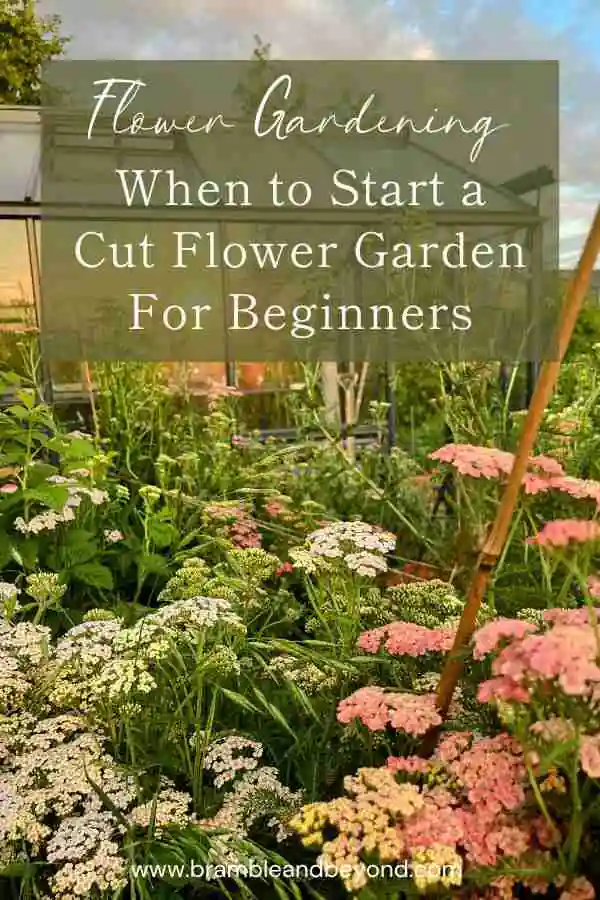Disclosure: This post may contain affiliate links, meaning I get commission if you decide to make a purchase through my links, at no cost to you. Please read my Affiliate Disclosure for more information.
So, you want to grow your own wedding flowers?
A few years ago, I stood in your shoes—dreaming of armfuls of beautiful, homegrown blooms for my big day. I had no experience, just a romantic notion that I could save money and add a personal touch by doing it all myself. I thought: How hard can it be?
Well… as it turns out, harder than I expected. Growing flowers for a specific date brings a unique kind of pressure. There’s weather, timing, pests, and plants that just don’t read the schedule. But now, with several years of flower growing behind me, I’ve learned what works (and what really doesn’t). Knowing what I know now, I’d do things very differently.
This post is for anyone wondering how to grow your own wedding flowers—without the stress and overwhelm. Whether you’re aiming for a full DIY floral affair or just want a few meaningful stems from your own garden, this step-by-step guide will walk you through the process, from planning and planting to harvesting and arranging.
Step 1: Decide what you want to grow based on your style and skill level
Start by thinking about what kind of flowers you love and what sort of arrangements you want. Do you picture natural, wild-looking bouquets? Something elegant and structured? Are you drawn to blousy, romantic blooms or simple, meadowy flowers?
This will help you decide whether you need to grow more focal flowers (like dahlias or roses), filler flowers (like ammi or gypsophila), or foliage and textures (like grasses and seed pods). Be realistic – not just about what you like, but what you can grow. Some flowers are trickier or need more time and space than others.
If you’re nervous about creating big arrangements, consider going small-scale. Bud vases and tablescaping are very much in right now – they don’t need many flowers but still make a big impact. Alternatively, if you want a wow moment, flower clouds are deceptively easy. A mass of baby’s breath with pops of colour shoved into a ball of chicken wire looks like you’ve spent a fortune (but you haven’t).

Step 2: Work out what flowers naturally bloom at your wedding date
This is a big one – and often overlooked. Choose flowers that are likely to be in full bloom at the time of your wedding. That way, you won’t have to stress about trying to force or delay flowering with fleece or fancy tunnels.
Here’s a rough guide by season:
- Early to mid spring: You’re mostly looking at bulbs – daffodils, tulips – and blossom. Choose varieties carefully as some flower earlier or later than others. You can delay bulb flowering slightly by keeping plants cool if they look like they’re going too early.
- Mid to late spring: Add in ranunculus, which can be coaxed earlier or later depending on when you start them and how warm they’re kept.
- Late spring to early summer: This is where biennials (like foxgloves and sweet rocket) and autumn-sown hardy annuals (like cornflowers or orlaya) come into their own. These need to be sown the year before, so planning ahead is essential.
- Early to mid summer: Think hardy annuals, along with perennials like peonies and roses. Peonies only flower for about two weeks though, so they’re tricky to rely on.
- Mid to late summer: This is the time for most spring-sown annuals and the start of the dahlia season. Honestly, most things will flower now with enough warmth and light – but weather can be a big factor.
In general, early season weddings need to be planned the year before with autumn sowings. Late summer weddings can get away with a spring sowing and still produce an abundance.
Step 3: Grow a mix of plants
Now that you’ve worked out what’s flowering when, it’s time to plan your sowings. Try to include:
- Focal flowers: the big hitters like dahlias, tulips, cosmos, roses
- Fillers: for structure and softness – ammi, gypsophila, cornflowers
- Foliage and texture: grasses, herbs, seedpods, trailing vines
Planting a diverse mix will give you flexibility. Weather and slugs don’t care about your wedding date – so a bit of variety means if one crop fails, you’re not left flowerless. Successional sowing (planting a few trays every few weeks) is a great tactic for a more reliable spread of blooms .

Step 4: Using a restricted colour palette
Unless you’re deliberately going for a bold or clashing look, it’s worth sticking to a consistent colour theme or palette. This makes your arrangements feel cohesive – and helps with swapping in substitutes if something doesn’t flower in time.
Most flower types come in a huge range of colours these days, so even within a narrow palette you can get a lot of variety in texture and tone. Think white and green, soft pinks and peaches, or moody mauves and burgundy – you can find cosmos, snapdragons, sweet peas, cornflowers, and more to suit whatever vibe you’re after.
Step 5: Grow more than you think you’ll need
No matter how carefully you plan, nature doesn’t always behave. A wet spring, an unexpected heatwave, or an outbreak of slugs can set things back. Growing your own wedding flowers means accepting a bit of unpredictability — so grow generously. If you think you’ll need 100 stems, grow for 200.
That way, if something fails, you’ve got backups. And if everything thrives? Even better — you’ll have plenty to play with.
Step 6: Choose low-fuss, high-impact flowers
Go for flowers that are easy to grow, prolific, and forgiving. Cosmos, cornflowers, calendula, snapdragons, phlox, and zinnias are brilliant choices — they’ll keep producing as long as you keep cutting. If you’re growing on a smaller scale, focus on reliable cut-and-come-again annuals rather than fiddly perennials or delicate flowers that sulk at the first sign of heat or rain.
It’s also worth thinking about foliage — plants like dill, mint, and orach not only smell amazing but add softness and movement to arrangements. And don’t forget about grasses or seed heads for texture and structure.

Step 8: Source your vessels early
Don’t underestimate how long it takes to find the right containers for your flowers. Whether it’s bud vases, urns, or something more rustic like old bottles and jars, start collecting early. Charity shops, car boot sales, or even borrowing from friends can keep costs down — and give your displays a more personal feel.
Matching everything perfectly isn’t necessary. In fact, mismatched can look far more charming, especially when paired with relaxed, homegrown flowers.
Step 9: Give yourself a buffer
Do not — I repeat, do not leave all the flower cutting and arranging to the day before your wedding. Aim to pick and condition your flowers at least two days ahead. Keep them somewhere cool, in clean water, out of direct sunlight. That way, you’ve got breathing space to make arrangements, troubleshoot, and actually enjoy the process without running yourself ragged.
You could also consider buying in a few extra stems from a local flower farmer to top up your homegrown stash — especially for focal flowers like roses or anything you know might be tight.
Step 10: Think about how to transport your flowers
This is one I didn’t really consider the first time – but it makes all the difference.
Buckets with a bit of water are best for transporting cut flowers to the venue. Crates or boxes lined with newspaper help to stop them tipping over. If you’re making arrangements ahead of time, think about how you’ll keep them cool and upright during the journey.
And if you’re getting help from friends or family, label everything clearly so there’s no confusion on the day.
A final thought
Growing your own wedding flowers is magical, meaningful, and, let’s be honest, a bit mad. But it can be done — and it can be one of the most rewarding things you’ll ever do. The key is to plan ahead, grow generously, and be realistic about what you can manage. And remember: even a few stems of your own flowers will bring so much beauty and meaning to your day.
So if you’re standing in your garden dreaming of wedding flowers, I’m here to say — yes, it’s possible. Just maybe give yourself a bit more time, a bit more space, and a lot more grace than I did.
If you want a more detailed breakdown on how to grow wedding flowers, check out this guide. Otherwise, here are some ideas of flowers you could grow if your wedding is in May, June, July, August, September.







